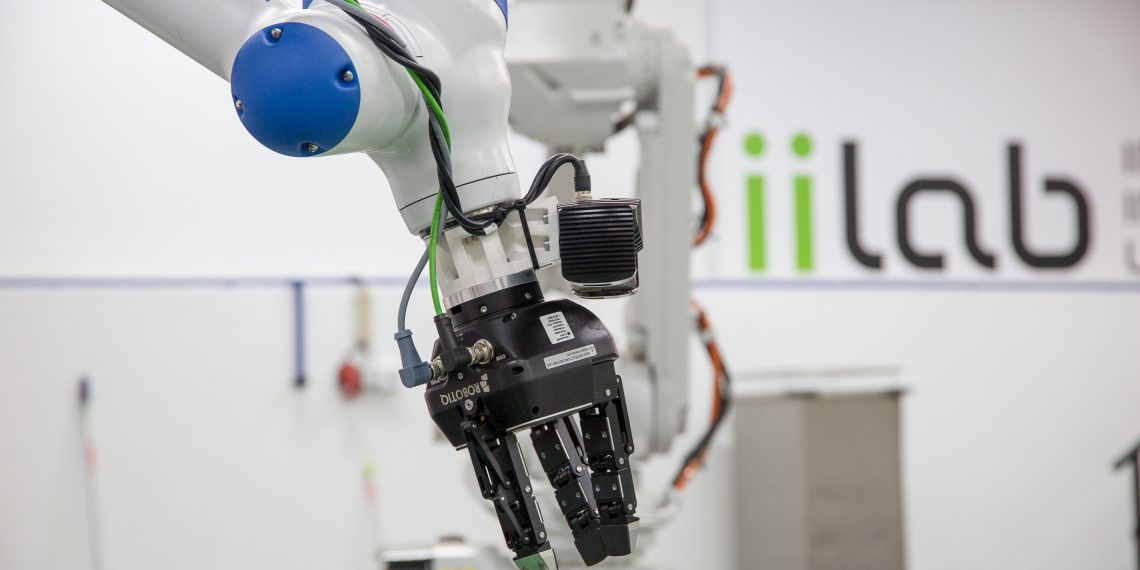Gonçalo Leão, researcher at INESC TEC’s Centre for Robotics in Industry and Intelligent Systems (CRIIS), and former student of Integrated Master in Informatics and Computation Engineering (MIEIC) at the Faculty of Engineering of the University of Porto (FEUP), obtained the highest mark in his master’s thesis, held at the Industry and Innovation Laboratory (iilab). Gonçalo Leão also graduated with a final average of 20/20, the highest mark obtained by any MIEIC student (including the first cycle (LIEIC) preceeding the MIEIC).
The master’s thesis Robotic Bin Picking of Entangled Tubes addressed the field of robotics and focused on solving a particular case of bin picking, a central issue in computer vision and robotics that hasn’t been deeply studied. This question is “very relevant for many production and manufacturing systems, since picking up tangled objects without proper care can cause disturbances in the production line”, says the researcher, who was supervised by Armando Sousa, Carlos Costa (researcher at CRIIS) and Germano Veiga (assistant coordinator at CRIIS).
“Gonçalo’s work was very ambitious right from the initial proposal, focusing on a field that CRIIS aims to delve into,” said Armando Sousa, lecturer at FEUP and researcher at CRIIS. “This is an opportunity for the short-term development of a field that further explores his work, of significant interest for INESC TEC”, he added. “This work presents a high scientific potential and industrial interest, already demonstrated by the companies who had contact with it,” stated Germano Veiga.
“I focused on the development of a system that enables a robotic arm, equipped with a tweezers-like clamp, to remove a set of tangled tubes from a box, one by one,” explained Gonçalo. According to the researcher, the work “was very challenging, since the tubes were entangled and occluding each other” – in fact, unorganised tubes inside an industrial box often block each other, thus making it difficult to reach and organise them.
According to Gonçalo, “the results are noteworthy and innovative”, because they demonstrate the effectiveness of the set of solutions that he developed. Said solutions were published at the ROBOT’2019 conference, as well as in the Applied Sciences journal. The researcher hopes to contribute to the “development of efficient industrial systems for handling a greater variety of objects”.
Armando Sousa described Gonçalo’s attitude as “praiseworthy”, stating that the researcher’s “integration in the CRIIS team was quite smooth, allowing him to use highly complex software and equipment, thus achieving state-of-the-art results”.
Gonçalo thanked INESC TEC and CRIIS, namely iilab, for the “key role” in his work, more specifically, for granting him access to top industry robotic equipment and providing technical support. “I also want to thank my fantastic team of supervisors, who helped me all the way through this great challenge. They provided a lot of support and motivation, with all their precious advices”, he concluded.
The INESC TEC researchers mentioned in this news piece are associated with INESC TEC and UP-FEUP.




 News, current topics, curiosities and so much more about INESC TEC and its community!
News, current topics, curiosities and so much more about INESC TEC and its community!